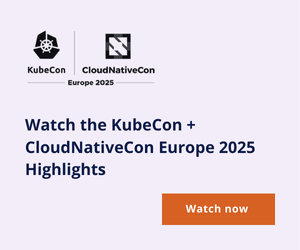Kubernetes was never designed with cloud bills in mind, yet for most organizations, it has become one of the biggest cost centers. The problem isn’t just infrastructure; it’s inefficiency on a large scale. A recent benchmark by Cast AI found that the average Kubernetes cluster utilizes only about 10% of its CPU capacity, despite compute costs increasing year-over-year. That means nine out of ten cores sit idle while your budget bleeds. Adding more clusters or regions doesn’t fix the problem; it amplifies it. The real question isn’t how to spend less, but how to run smarter without sacrificing control, security, or speed.
This article compares Talos + Omni with traditional Kubernetes platforms to show where real savings appear, where tradeoffs hide, and how to choose the right approach for your environment.
Why this comparison matters
Kubernetes no longer serves experimental workloads; it supports critical business operations. That scale introduces both expected costs and unwelcome surprises. Managing that balance feels like walking a tightrope: stay flexible, but don’t let cloud bills go off the rails. Traditional managed services offer ease but come with hidden price escalators like per-vCPU billing, storage markups, and licensing tiers.
Talos + Omni offer a different track: an immutable, minimal OS paired with consistent, per-node pricing that could stabilize costs. This is more than theoretical savings; it’s about identifying when that model makes a difference for real-world teams.
Five pillars that define true TCO in Kubernetes
The comparison rests on five practical pillars: total cost of ownership, operational effort, efficiency, risk and compliance, and sensitivity to usage patterns. To start with, the total cost of ownership includes everything from computing and control planes to storage, networking, licensing, migration, and staffing.
Next, operational effort looks at the human side: how much time teams spend on upgrades, incident handling, and everyday maintenance. We consider efficiency, which focuses on the pod density per node and its impact on the overall node count. Risk and compliance follow, covering patch cadence, auditability, and the potential for vendor lock-in.
Finally, sensitivity examines how the outcomes shift if utilization dips or workload patterns change. Of course, these comparisons only make sense with a common baseline: node type, utilization, storage profile, and support level. Without this common baseline, percentages fail to convey the true picture.
What Talos + Omni bring to the table
Talos is a purpose-built, immutable OS for Kubernetes. It removes most of the general-purpose Linux surface: no SSH, no package manager, and an API-first control plane. That design reduces patch surface, simplifies automation, and often improves pod density because the OS uses fewer resources.
Omni layers lifecycle management and per-node pricing on top, automating provisioning, upgrades, and integrations with management tooling. The combination typically reduces infrastructure footprint and cuts recurring operational hours. Managed clouds usually address the operational hours challenge but retain higher recurring infrastructure fees. That difference explains much of the cost argument.
Cost breakdown: Where the biggest savings and surprises hide
- Compute: Talos’s small OS overhead and denser packing mean fewer nodes for the same workload. High, steady utilization, bare-metal, or colocation environments often allow Talos to undercut cloud VM costs.
- Control plane and management: Managed control planes are billed for convenience. Omni’s per-node model combines lifecycle work into a predictable fee. The math favors Omni when operating many or large clusters.
- Storage and network: Premium cloud storage and egress add up fast. Bare metal reduces some of those recurring charges but requires replication of managed data services.
- Licensing and support: Some vendor platforms charge for features that go unused. Talos + Omni typically charges per node for enterprise support, simplifying cost forecasting at scale.
- Operational staffing: Immutable systems and automation reduce weekly maintenance hours. That lowers Opex, but only if the team can manage bare-metal or colocation operations.
- Migration and tooling: One-off migration work, CI/CD changes, and replatforming managed services create upfront costs that can erase early savings if not planned carefully.
- Physical hosting costs: Power, cooling, bandwidth, and remote hands add to colocation bills and must be included in TCO for bare metal.
Risks and hidden costs
Migration complexity is often underestimated, especially where managed services are in use. Colocation brings power and bandwidth bills, plus remote hands costs that appear only after deployment. Hardware failure and refresh cycles require spares and planning. Finally, density claims are sensitive to workload mix; IO-heavy or GPU workloads erode the advantage. A pilot should always be run to measure real-world utilization, not synthetic or vendor-provided benchmarks.
Compliance and data sovereignty can also introduce unexpected costs if workloads span multiple jurisdictions. Support gaps are another risk; leaner stacks often mean less vendor hand-holding, which can translate into slower incident resolution.
Decision framework: When Talos + Omni make sense (and when they don’t)
Talos + Omni make sense when clusters are large, utilization is steady, and operational expertise is available to handle bare metal or colocation environments. They provide the best value at scale, with predictable per-node pricing and increased density balancing capital and maintenance costs. Managed cloud platforms, on the other hand, continue to be the preferred option when workloads shift, reliance on native cloud services is high, or the team is small and unable to handle infrastructure operations.
The best approach is to do a small pilot, deploy a non-critical task for 60 to 90 days, track actual usage and operating time, and then compare the results to actual cloud billing to make an evidence-driven decision.
The bottom line: How to validate before you commit
Talos + Omni can unlock significant TCO advantages, but only when aligned with the right scale, utilization, and operational readiness. The real advantage comes from a planned approach: start small, validate assumptions with a focused pilot, and let real-world data guide the decision.
By measuring actual utilization, operational effort, and costs against your current model, the choice becomes clear. No vendor promise replaces firsthand evidence. Test, measure, and move forward with confidence because the smartest migration is the one proven in your environment.





